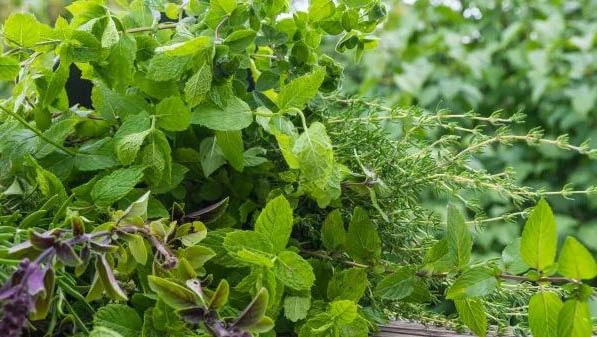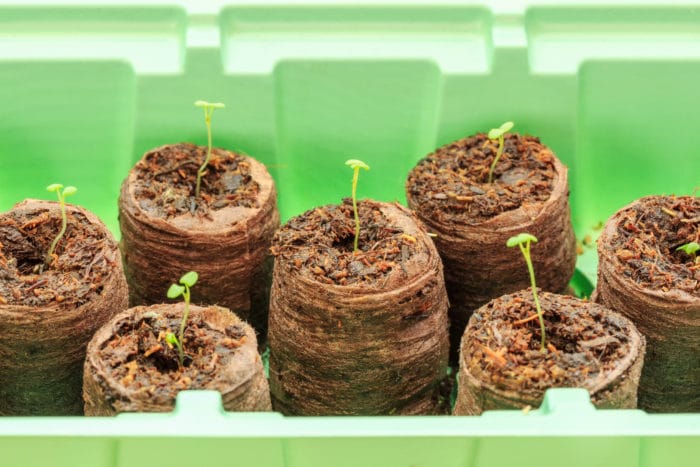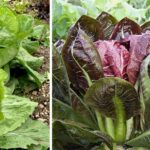When to sow thyme?
Thyme is a perennial that can stay in place year after year and does not freeze in winter. It is planted after the frosts and when the soil has had time to warm up w
However, be careful because some varieties do not withstand intense cold and high humidity. In this case, it will be necessary to get it warm during the winter by placing it in a pot. The harvest can be done throughout the year.
Which varieties to choose?

There are many varieties of thyme:
Common thyme
It is the most common species and the most sought after for its taste and medicinal qualities. It is in the form of small oval and narrow lanceolate leaves. When it flowers, its flowers are white to mauve and form ears. We can find various forms including:
- The Silver Posie: its sweet white variegated foliage and green with pink-purple flowers;
- Theerectus: it has the peculiarity of pushing up and right;
- Theaureusit has leaves with gold highlights;
- The fragrantissimus also called orange thyme: it is a hybrid with straight and fine foliage that smells like lemon.
Spanish oregano or za'atar thyme
It is a compact sub-shrub is very fragrant, it has very small rigid leaves almost fleshy as well as conical clusters of intense pink flowers. It does not tolerate moisture well in winter and it is recommended to grow it in a pot by protecting it from moisture.
Corsican thyme also called thyme carvi
It is a cover variety, with very small glossy leaves. Its flowers are lavender and it gives off a scent of cumin.
Lemon thyme
It is a plant that grows in green-leafed bushes evoking grass, spreads out and emits powerful scents of lemon and thyme mixed. Its sparse flowers are lilac mauve. There are two very well known varieties that are:
- The Silver Queen : which is variegated with white;
- The Golden King: variegated with yellow.
These are difficult to support in winter and are easier to grow in pots.
Lavender-flavored thyme or wild marjoram
It is a gray, clean and erect sub-shrub that gives off a powerful scent of thyme and oregano. Some chemotypes are very close to those of eucalyptus or lavender. It's a strong aroma that goes well with barbecue. It resists frost perfectly, but with difficulty in the humidity, it is better to grow it in a pot.
Wild thyme or wild thyme
It comes from northern Europe. Climbing varieties are divided into two species:
- True thyme, T. serpyllum used in herbal medicine and giving off a powerful aroma;
- T. praecox subsp. Articus that has little odor.
You will also find many varieties of thymes lined with ornamental foliage. It comes in a wide range of floral colors: from cherry red to pure white.
The thyme of the Azores
It gives off a sweet bitter orange scent and it grows in the form of a dense carpet that could evoke the moss. Its flowers are pink or purple.
Lemon thyme
It is a sub-shrub that grows spreading. It has elliptical leaves of large sizes. Its flowers with erect inflorescences are mauve. It can change appearance, but also aroma, some have rather camphoric scents and others give off aromas of oregano and thyme.
We find in this variety:
- The Foxley variegated with white;
- The Bertram Anderson golden and growing quite low;
- TheArcher's Gold with bright yellow foliage during the summer and lemony fragrance.
You can try these different species to vary the pleasures and different flavors in your dishes.
What to do before sowing thyme?
If you sow thyme, you do not need to enrich the soil with humus. However, it must be light, but above all, it must be perfectly drained, in fact, thyme does not withstand moisture in winter especially.
If you plant thyme in the spring or fall, the soil must also be well drained and light. You then dig a hole a few inches deep. It will also be enriched in humus so that the plant develops perfectly.
The soil will need to be cleaned of old roots and weeds. For that you have to dig it. Then you dig a shallow furrow that you flatten with the back of a rake.
How to sow it?

Sow thyme in the ground
The seeds being tiny, you can sow it dru in two close furrows. Then you cover with a little soil and water correctly. When the plant has germinated, about 5 weeks after sowing, you choose the most beautiful and you transplant them to their final place by leaving a distance of 20 cm between each plant. It will then take a year or a year and a half before you can pick the first sprigs of thyme.
Multiply thyme
You can perfectly divide your tufts to multiply it. This operation is always done in summer:
- Dig up the foot of thyme and keep the maximum of roots;
- Separate the plant into several pieces by tearing it by hand;
- You just have to replant the plants immediately.
marcotter
The layering must be done in the spring. We must then bury some stems that should develop a root system. Once these are perfectly formed, they must be separated from the mother plant.
cuttings
You can also cuttings to obtain many plants. Be aware that it's a bit long. This operation is carried out in summer, and you can only harvest one year later.
Where to plant thyme?
Thyme particularly likes light soils, healthy, sandy, poor and limestone, drained, rather dry and stony.
He likes the heat a lot, so you have to choose a sunny place and even in full sun.
The varieties marketed today, however, are able to adapt to all soils. The area must measure at least 30 by 30 cm, so that your thyme can grow perfectly. If your land is heavy and has a tendency to water in winter, it is best to grow it in a planter or pot.
If in doubt, put it in a slightly elevated border or in a square, the soil dries more quickly. You can perfectly cultivate other herbs such as sage, rosemary, etc.
The best is to find a sunny place near the kitchen.
How to maintain it?
Thyme should be weeded very regularly, as weeds tend to invade it fairly quickly. This is the moment when you can hoe around the plant to ventilate and loosen the soil.
If the climate is cold enough, the stems harden over the years. It is recommended to renew the plants every 4 years.
The size of thyme: you trim your thyme once the bloom is over. It is then necessary to fold the stems below the first flowers. New stems form then that are finer. By repelling, it will then form a more compact ball.
If winter has damaged stems and they have died, they must be removed in the spring.
How to water thyme?
Aside from living in a very dry area, you do not need to sprinkle thyme.
You do not have to add fertilizer either, because the more thyme grows on poor, dry soils, the more fragrant it is.
Harvest thyme: when and how?
You can harvest thyme all year when the weather is nice. However, you should know that it is in the spring before flowering that it is the most fragrant. He will eventually lose some of his leaves and his taste.
To keep the thyme, you can perfectly dry it or put it in the freezer once it is dry. It is an option that allows to have constantly, sprigs of thyme equivalent to those of fresh thyme.
Thyme diseases and what to do?
Thyme is easy to grow and its main enemy is moisture. If the water is stagnant because the soil is poorly drained, the roots can be attacked by fungi. They end up rotting and the plant will die for lack of food.
In this case, it is imperative to change the place and replant in pots or in a dry place.
Even more plantations:








